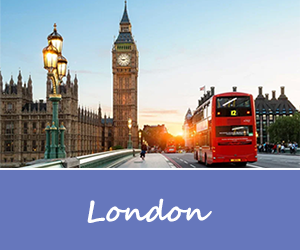
Dubai, also spelled Dubayy , constituent emirate of the United Arab Emirates (formerly Trucial States or Trucial Oman). The second most populous and second largest state of the federation (area 1,510 square miles [3,900 square km]), it is roughly rectangular, with a frontage of about 45 miles (72 km) on the Persian Gulf. The emirate’s capital, also named Dubai, is the largest city of the federation. The city is located on a small creek in the northeast part of the state. More than nine-tenths of the emirate’s population lives in the capital and nearby built-up sections. Dubai is surrounded by Abu Dhabi emirate on the south and west and by Sharjah emirate on the east and northeast. In addition, the small exclave (detached section) of Al-Ḥajarayn in the Wadi Ḥattā, more than 25 miles (40 km) from the nearest territory of Dubai proper, belongs to the state.
 Istanbul is also known as City Of Mosques.Istanbul is the capital city of Ottoman Empire sine
1453.There are almost 3000 mosques.
Sultanahmet (The Blue Mosque)
This 17th-century mosque, facing Hagia Sophia, is famous for its beautiful blue tile work
ornamenting its interior walls. Its six slim minarets distinguish it from other mosques, which
normally have two or four minarets.
It was built from 1609 to 1616, during the rule of Ahmed I. Like many other mosques, it also
houses the tomb of the founder, a madrasah and a hospice. While still used as a mosque,Sultanahmet is one of the most popular, and important, tourist attractions in Istanbul.
Sultanahmet is considered to be the last great mosque of the Ottoman classical period, as it is
the culmination of two centuries of both Ottoman mosque and Byzantine church development.
It incorporates some Byzantine elements of Hagia Sophia along with traditional Islamic
architecture.
Istanbul is also known as City Of Mosques.Istanbul is the capital city of Ottoman Empire sine
1453.There are almost 3000 mosques.
Sultanahmet (The Blue Mosque)
This 17th-century mosque, facing Hagia Sophia, is famous for its beautiful blue tile work
ornamenting its interior walls. Its six slim minarets distinguish it from other mosques, which
normally have two or four minarets.
It was built from 1609 to 1616, during the rule of Ahmed I. Like many other mosques, it also
houses the tomb of the founder, a madrasah and a hospice. While still used as a mosque,Sultanahmet is one of the most popular, and important, tourist attractions in Istanbul.
Sultanahmet is considered to be the last great mosque of the Ottoman classical period, as it is
the culmination of two centuries of both Ottoman mosque and Byzantine church development.
It incorporates some Byzantine elements of Hagia Sophia along with traditional Islamic
architecture.

London is the capital of England and the United Kingdom and one of the largest and most important cities in the world. The area was originally settled by early hunter gatherers around 6,000 B.C., and researchers have found evidence of Bronze Age bridges and Iron Age forts near the River Thames. Ancient Romans founded a port and trading settlement called Londinium in 43 A.D., and a few years later a bridge was constructed across the Thames to facilitate commerce and troop movements. But in 60 A.D., Celtic queen Boudicca led an army to sack the city, which was burned to the ground in the first of many fires to destroy London. The city was soon rebuilt, but burned again about 125 A.D. More rebuilding occurred, and within a few generations the population exceeded 40,000 people. After the fall of the Roman Empire in 476 A.D., however, the city was attacked numerous times by Vikings and other raiders, and soon London was largely abandoned.